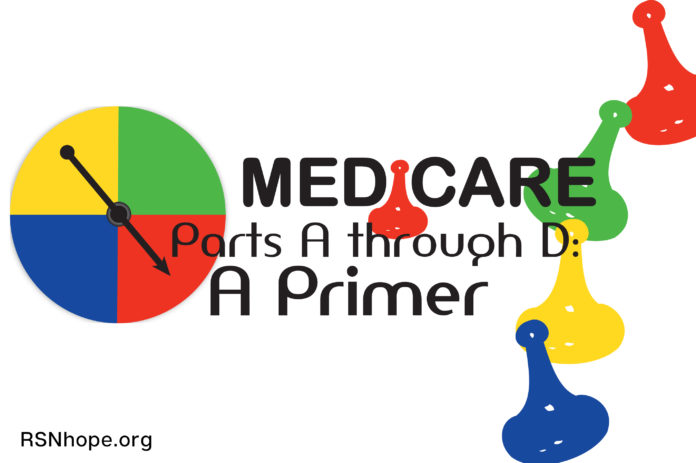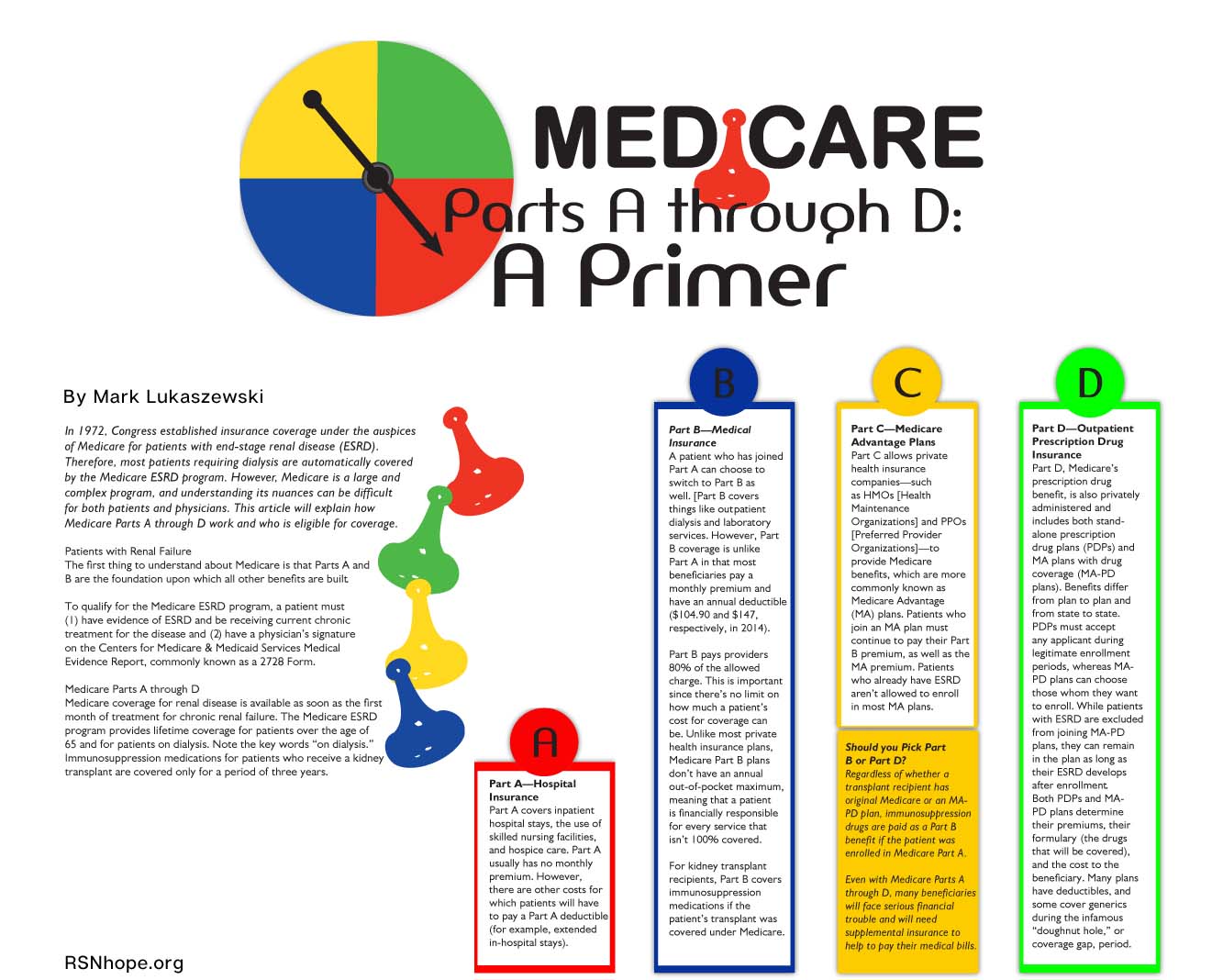In 1972, Congress established insurance coverage under the auspices of Medicare for patients with end-stage renal disease (ESRD). Therefore, most patients requiring dialysis are automatically covered by the Medicare ESRD program. However, Medicare is a large and complex program, and understanding its nuances can be difficult for both patients and physicians. This article will explain how Medicare Parts A through D work and who is eligible for coverage.
The first thing to understand about Medicare is that Parts A and B are the foundation upon which all other benefits are built.To qualify for the Medicare ESRD program, a patient must (1) have evidence of ESRD and be receiving current chronic treatment for the disease and (2) have a physician’s signature on the Centers for Medicare & Medicaid Services Medical Evidence Report, commonly known as a 2728 Form.Medicare Parts A through D
Medicare coverage for renal disease is available as soon as the first month of treatment for chronic renal failure. The Medicare ESRD program provides lifetime coverage for patients over the age of 65 and for patients on dialysis. Note the key words “on dialysis.” Immunosuppression medications for patients who receive a kidney transplant are covered only for a period of three years.Part A—Hospital Insurance
Part A covers inpatient hospital stays, the use of skilled nursing facilities, and hospice care. Part A usually has no monthly premium. However, there are other costs for which patients will have to pay a Part A deductible (for example, extended in-hospital stays).Part B—Medical Insurance
A patient who has joined Part A can choose to switch to Part B as well. [Part B covers things like outpatient dialysis and laboratory services. However, Part B coverage is unlike Part A in that most beneficiaries pay a monthly premium and have an annual deductible ($104.90 and $147, respectively, in 2014).
Part B pays providers 80% of the allowed charge. This is important since there’s no limit on how much a patient’s cost for coverage can be. Unlike most private health insurance plans, Medicare Part B plans don’t have an annual out-of-pocket maximum, meaning that a patient is financially responsible for every service that isn’t 100% covered.
For kidney transplant recipients, Part B covers immunosuppression medications if the patient’s transplant was covered under Medicare.Part C—Medicare Advantage Plans
Part C allows private health insurance companies—such as HMOs [Health Maintenance Organizations] and PPOs [Preferred Provider Organizations]—to provide Medicare benefits, which are more commonly known as Medicare Advantage (MA) plans. Patients who join an MA plan must continue to pay their Part B premium, as well as the MA premium. Patients who already have ESRD aren’t allowed to enroll in most MA plans.
Part D—Outpatient Prescription Drug Insurance
Part D, Medicare’s prescription drug benefit, is also privately administered and includes both standalone prescription drug plans (PDPs) and MA plans with drug coverage (MA-PD plans). Benefits differ from plan to plan and from state to state. PDPs must accept any applicant during legitimate enrollment periods, whereas MAPD plans can choose those whom they want to enroll. While patients with ESRD are excluded from joining MA-PD plans, they can remain in the plan as long as their ESRD develops after enrollment. Both PDPs and MAPD plans determine their premiums, their formulary (the drugs that will be covered), and the cost to the beneficiary. Many plans have deductibles, and some cover generics during the infamous “doughnut hole,” or coverage gap, period.
Should you Pick Part B or Part D?
Regardless of whether a transplant recipient has original Medicare or an MAPD plan, immunosuppression drugs are paid as a Part B benefit if the patient was enrolled in Medicare Part A. Even with Medicare Parts A through D, many beneficiaries will face serious financial trouble and will need supplemental insurance to help to pay their medical bills.
Download the PDF: Medicare parts A through D









